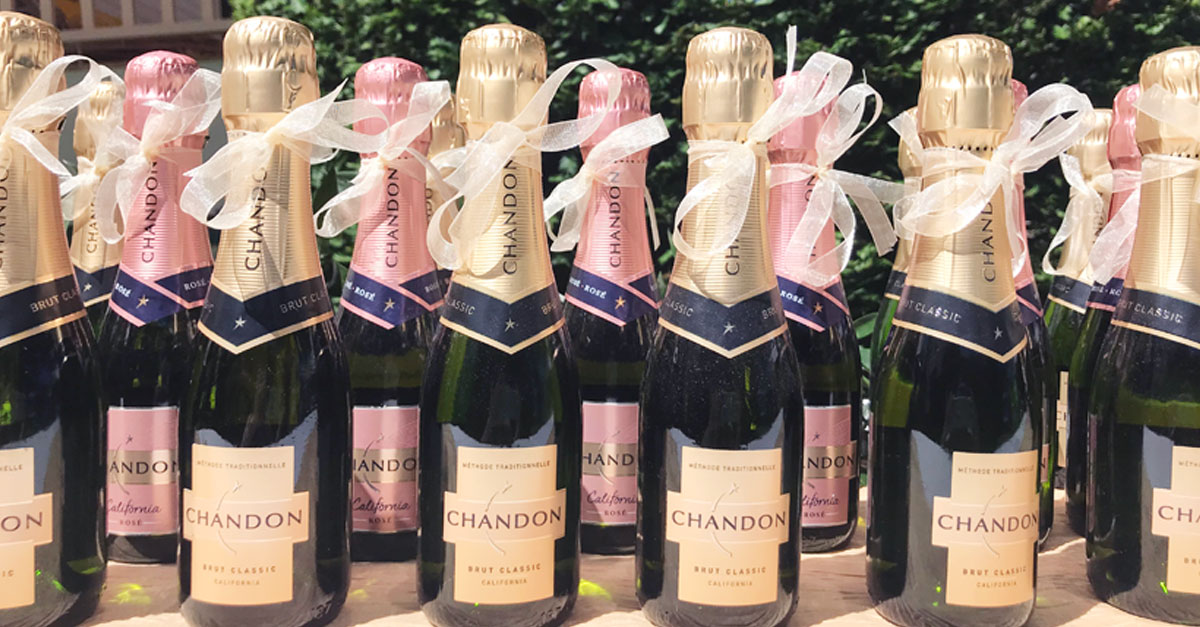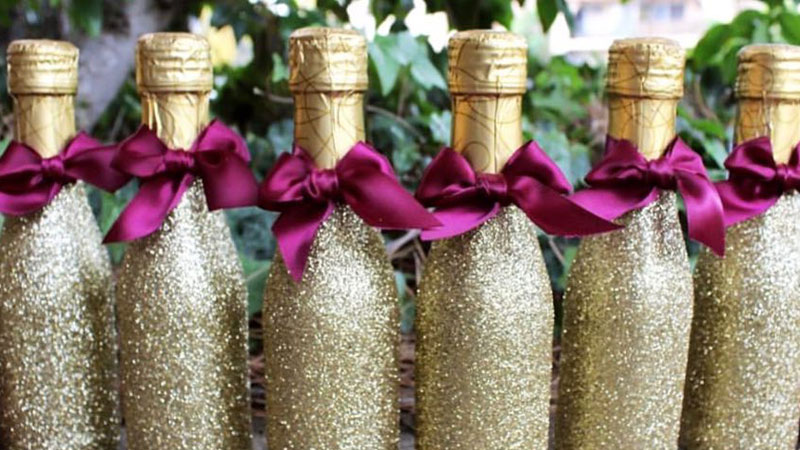“Everyone wants to talk about the big Ford truck,” Derrick Westbrook says. “No one wants to hear about your tiny hybrid.”
Westbrook, a Chicago-based sommelier, is explaining why single-serve sparkling wine bottles don’t generate as much industry cred as magnums and other large-format vessels.
Equivalent to approximately one glass of wine, those small, 187-milliliter vessels are called splits, Piccolos, minis, or, in the words of one celebrity party planner, “personal poppers.” Standard wine bottles, by means of comparison, clock in at 750 milliliters, and half- or demi-bottles contain 375 milliliters. Magnums hold 1.5 liters of wine, making them ideal for aging and Instagram.
Don't Miss A Drop
Get the latest in beer, wine, and cocktail culture sent straight to your inbox.Splits, meanwhile, are designed to be consumed on the spot. They are frequently custom-labeled (“Welcome to Janie’s Bridal Shower!”), and cursed by their own cuteness.
But cute and smart are not mutually exclusive. More than just a short-lived packaging trend, splits are a 125-year-old success story with major contemporary potential.
According to Nielsen data, despite the soaring popularity of canned wine, Americans actually bought five times as many 187-milliliter bottles as we did 375-milliliter cans in 2017. Champagne houses Moet & Chandon, Laurent Perrier, and Nicolas Feuillatte currently offer splits. Budget-friendly Prosecco splits from La Marca, Riondo, and Mionetto were recently joined by Mezza di Mezzacorona’s MiniZZ, which debuted earlier this year.
Splits are succeeding, whether we include them in “serious” wine conversations or not. Is it time to start bringing them to the grown-ups’ table?

French Air Space, Supermodels, and Gender Reveal Parties
Single-serve bubbles totally seem like an Instagram-era innovation, but the format has a long history. Moet & Chandon reportedly released the world’s first splits in 1893. In France, Champagne splits and demis “were historically very common for inflight consumption,” Eric Lebel, Krug’s cellar master, says.
Splits surged stateside in the 1990s. As the U.S. economy boomed, a new caste of celebrity called “supermodels” signature-walked into our collective consciousness. Glamorous and aspirational, supermodels inspired us to don conspicuously logoed clothing and drink Champagne through bendy straws — because they were often photographed doing the latter in nightclubs and makeup chairs.
“It was around the time George Michael’s “Freedom! ‘90” track made it to my dentist’s office — when models were being photographed drinking the mini bottles with straws while getting glam,” sommelier Belinda Chang tells Food & Wine. “I was wine director at Charlie Trotter’s in Chicago at the time and promptly ran out to the store, bought a box of Pommery POP, and loaded up in my friend’s SUV cup holders with the bottles.”
After winning over ’90s club kids and everyone drawing fake beauty marks on their cheeks, splits mostly faded from public eye. But they never really disappeared. La Marca introduced its DOC Prosecco in splits in 2013. The company doesn’t release sales information, but a brand spokesperson says the growth of splits “has been significant year over year.”
Now splits are a popular wedding party favor or novelty item. Champagne Pommery debuted gender-reveal splits, called the It’s a Boy and It’s a Girl collection, this summer. They retail for $15 a 187-milliliter bottle, but are clearly intended for entertaining, not contemplative sipping.
Size and Science
There are, admittedly, benefits to large-format packaging. Anyone using the term “baller bottle” should obviously be ignored, but people who prefer magnums for bubbly do have some oenological science on their side.
Wine ages most gracefully in larger bottles. It’s a spatial issue: Air sneaks into unopened bottles over time via the cork, degrading the wine slightly. Large-format bottles contain more wine per cork, so they “age at half the speed of their 750-milliliter counterparts,” Laura Burgess writes in VinePair.
By nature of their size, splits do not have nearly as much aging potential as 750-milliliter standard bottles, let alone magnums. But maybe that isn’t the point.
“If you’re storing or cellaring, bigger is better,” Westbrook agrees, but he adds that, “If you’re going to drink it right away, there’s minimal difference” in drinking quality bubbles from large- or small-format bottles.
For those seeking immediate or short-term gratification, there are also some advantages to splits. Bottles of bubbles go flat within three to five days after they are opened. Splits, however, are consumed immediately upon opening. You can order bubbles in a split at a bar or restaurant that doesn’t serve a lot of sparkling wine, and never have to worry that you’ll be poured a glass that’s lost its sparkle.

Drink Me
Perhaps most importantly, splits are a low-risk investment. “You can get people to try things they wouldn’t otherwise,” Westbrook says. If you don’t like the wine you bought, well, you only have to drink one glass.
They are also extremely economical for those whose thirst for bubbles outpaces our budgets. A 750-milliliter bottle of Moet & Chandon Imperial Brut costs around $42. Splits of that same wine are $11 a pop. Krug doesn’t currently offer its Grand Cuvée in splits, but Lebel considers its $80 demi-bottles “a recruitment tool for those for whom opening a full bottle is prohibitively expensive.”
Smaller bottles can appeal to some consumers ideologically, too. According to research conducted by E. & J. Gallo Winery last year, one in four wine consumers said they would be more open to trying new wines if they didn’t have to commit to a full bottle.
“Like a toy anything, be it a poodle, a pocketbook or a Porsche, these small bottles seem more accessible than their bigger, more imposing siblings,” Bill Daley wrote in a 2005 Chicago Tribune article. At the time, sales of splits were up 25 percent over the year prior.
Something to Celebrate
Like ordering a personal pizza or unwrapping a business-class amenity kit on an airplane, splits provide a sense of ownership and agency. They are tiny, pre-packaged treats, just for us. We don’t have to share them, sniff their bouquets, or even think about them too much.
Will popping open a split ever be as impressive as carefully repositioning Champagne magnums in a dusty cellar for the next decade? Or course not. It might be more fun, though.
